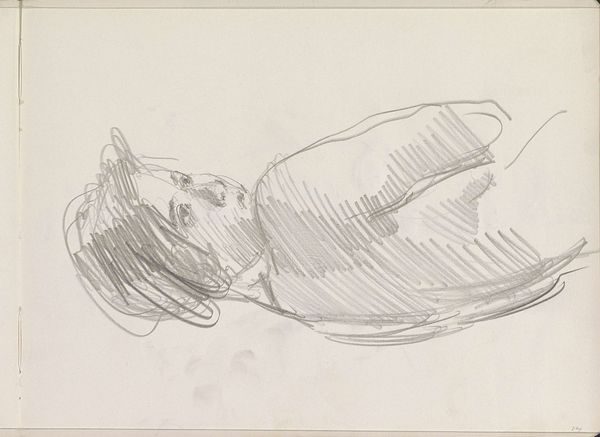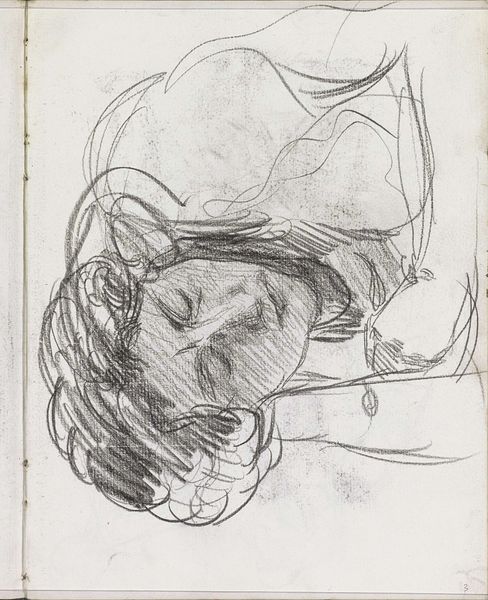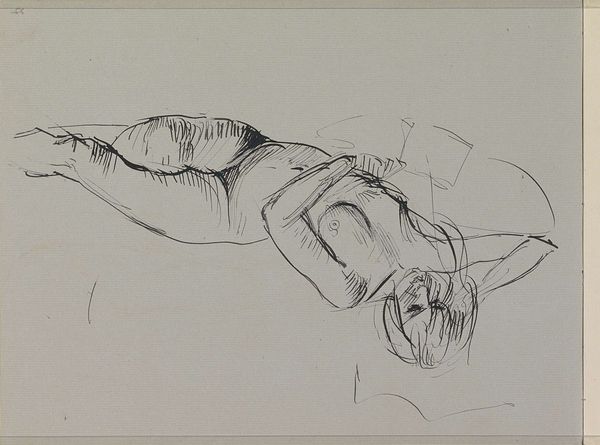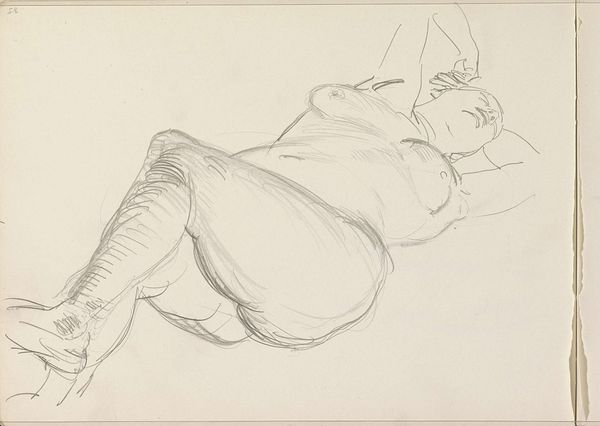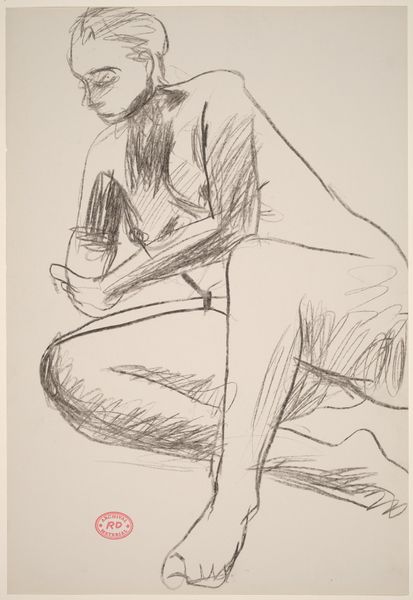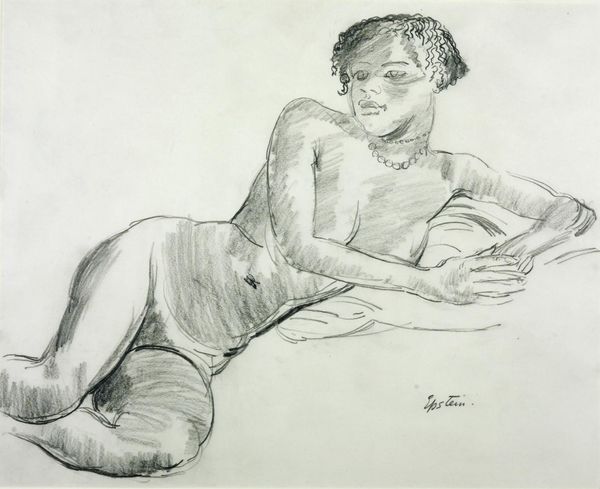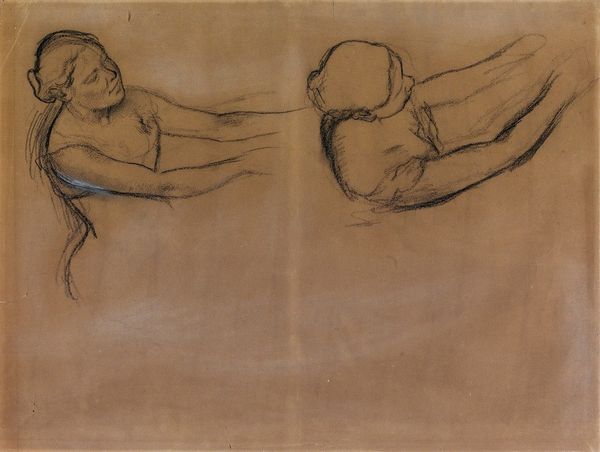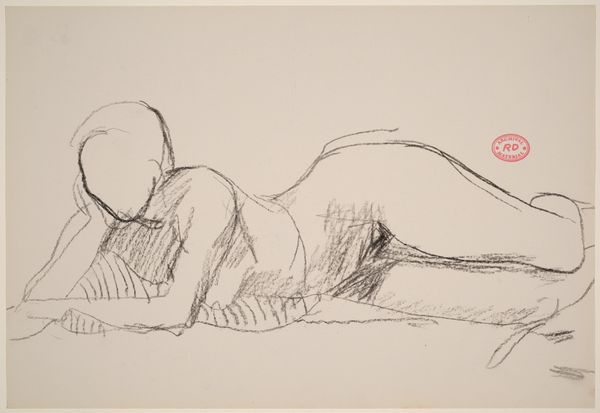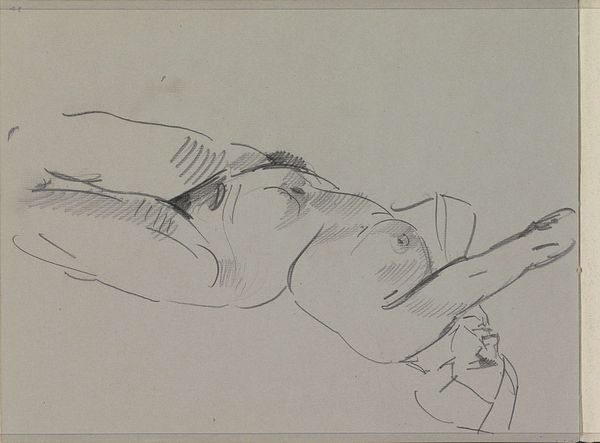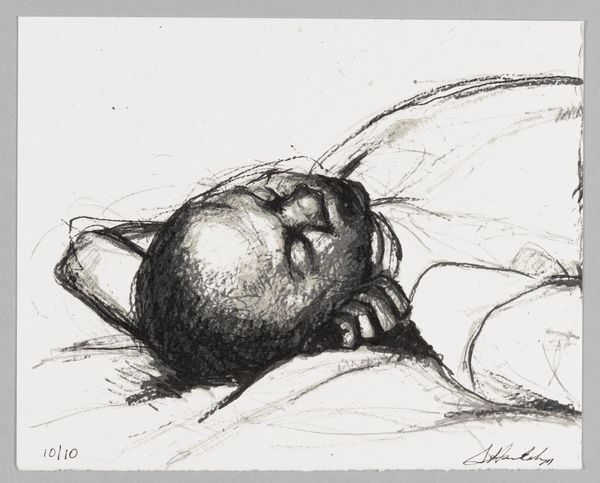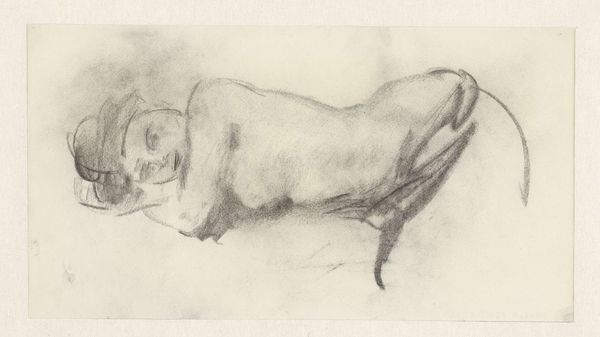
Dimensions: support: 476 x 559 mm
Copyright: © The estate of Sir Jacob Epstein | CC-BY-NC-ND 4.0 DEED, Photo: Tate
Curator: Here we have Sir Jacob Epstein's "The Little Negress," a drawing held at the Tate. It measures roughly 47 by 55 centimeters. Editor: The girl's pose is so languid. The drawing’s simplicity and softness give it an intimate, almost dreamlike quality. Curator: Epstein’s interest in non-western art informed his work. Consider the context—early 20th century Europe grappling with colonialism. The material reality is a paper support receiving marks, but what meaning is being produced? Editor: The pearls hint at a kind of forced gentility, a symbol of imposed refinement. It's a powerful image carrying the weight of cultural exchange and perhaps exploitation. Curator: Indeed. The title itself, freighted with colonial-era language, demands critical assessment of power dynamics, representation, and the artist’s role. Editor: These lines allow us to contemplate the cultural narratives embedded in such a seemingly simple portrait. Curator: Ultimately, this work raises crucial questions about the complexities of art, labor, and the gaze.
Comments
tate 6 months ago
⋮
http://www.tate.org.uk/art/artworks/epstein-the-little-negress-n04424
Join the conversation
Join millions of artists and users on Artera today and experience the ultimate creative platform.
tate 6 months ago
⋮
The model for this study remains unknown. It is one of many drawings of women of colour Epstein made in the summer of 1928, many of which were exhibited at the Godfrey Phillips Gallery in London later that year. Epstein is primarily known as a sculptor, but according to art historian Frank Felsenstein he was also ‘a compulsive sketcher’. He developed this interest as a child, drawing figures he had seen in city crowds. He grew up in New York, the child of Polish-Jewish parents, moving to London in 1905. This drawing was exhibited under the title The Little Negress in 1928. The use of the term ‘negress’, the female form of ‘negro’, was commonly used in the 1920s. It is now acknowledged as offensive. The term derives from the Latin for black. From the 18th century onwards it became associated with the now debunked pseudoscience of ‘race biology’. This discriminatory classification of people based on their skin colour has been used to justify racism. Gallery label, July 2019
